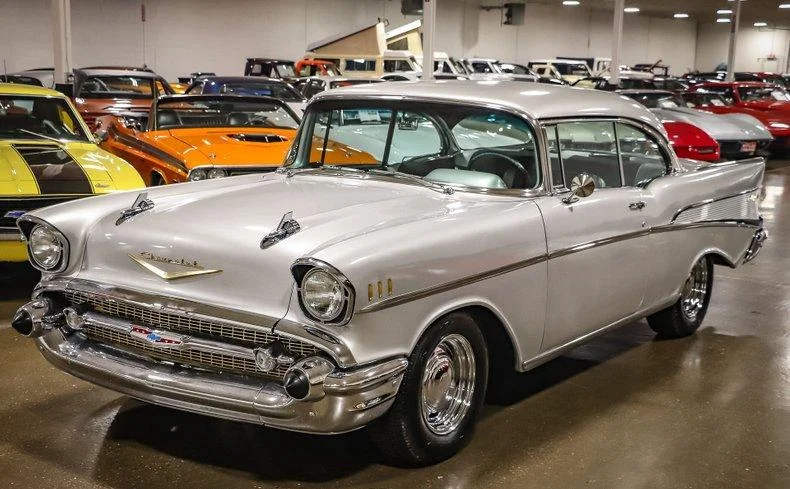
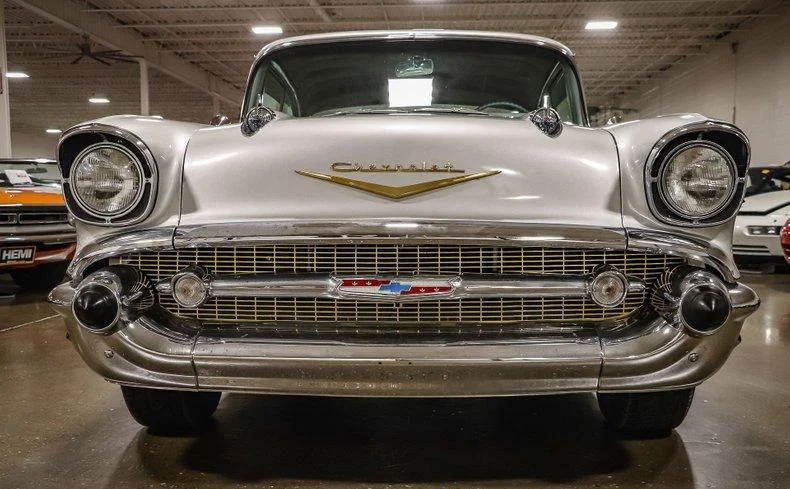
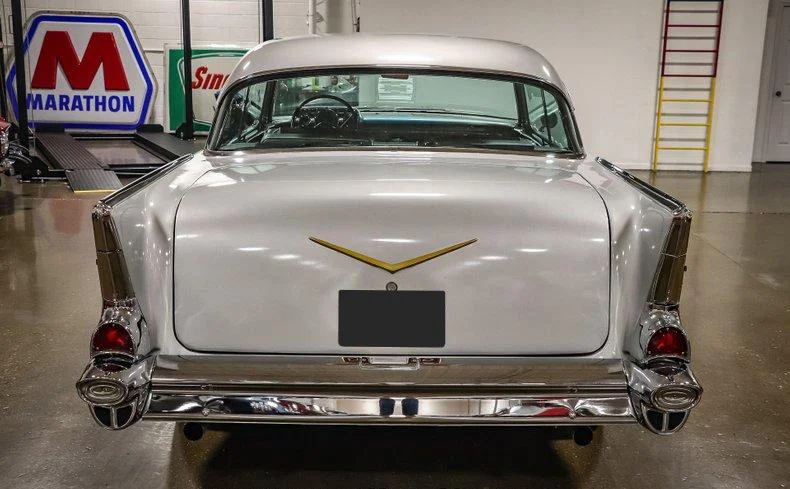
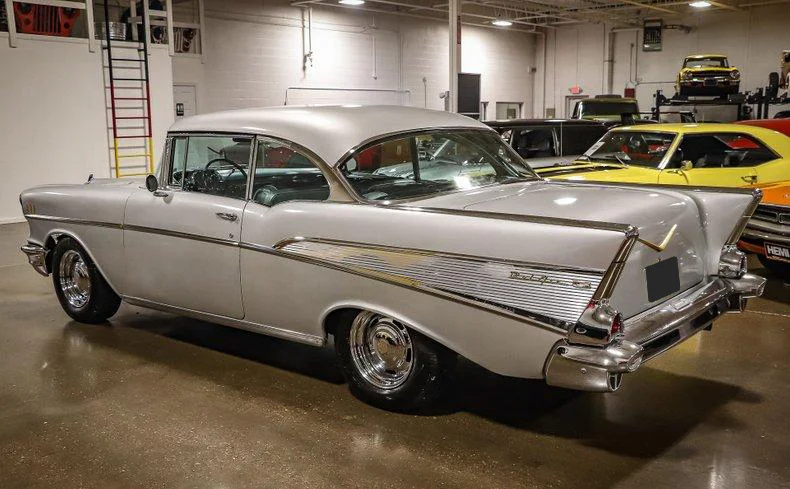
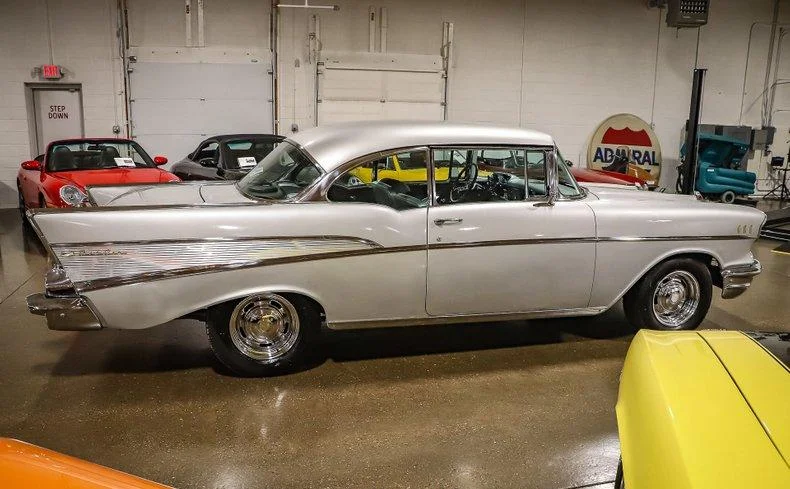
Description
The 1957 Chevrolet Bel Air Hardtop is a beautifully restored classic that combines vintage charm with modern performance upgrades. Under the hood, the engine bay is meticulously detailed, featuring a Summit Racing crate V8 engine paired with a Holley 4-barrel carburetor. The engine is adorned with a chrome air filter and polished, finned valve covers, complemented by a new aluminum radiator and an air-conditioning compressor with all necessary connections. The billet-aluminum pulley arrangement and well-organized hoses and hard lines contribute to a clean, well-executed engine bay. The shiny display extends…
The 1957 Chevrolet Bel Air Hardtop is a beautifully restored classic that combines vintage charm with modern performance upgrades. Under the hood, the engine bay is meticulously detailed, featuring a Summit Racing crate V8 engine paired with a Holley 4-barrel carburetor. The engine is adorned with a chrome air filter and polished, finned valve covers, complemented by a new aluminum radiator and an air-conditioning compressor with all necessary connections. The billet-aluminum pulley arrangement and well-organized hoses and hard lines contribute to a clean, well-executed engine bay. The shiny display extends underneath the car with headers, dual exhausts, and lower engine surfaces.
Inside, the Bel Air maintains its classic design elements while showcasing a striking silver theme. The silver-painted dashboard features a stunning chrome gauge cluster, with chrome and machined-steel trim accentuating the lower dash. The chrome steering wheel, with black trim, adds to the classic appeal. Controls for vintage air-conditioning and air vents are seamlessly integrated into the interior. The upholstery is silver with charcoal accents, complemented by charcoal carpeting on the floor. The door panel upholstery matches the seating surfaces and includes chrome-strip trim, maintaining the car’s elegant and cohesive look.
Overall, this 1957 Chevrolet Bel Air Hardtop offers a perfect blend of classic style and modern upgrades, making it a standout example of 1950s American automotive design.







